Gigabyte MZ32-AR0 Block Diagram
The block diagram is really interesting here. There is PCIe Gen3 and Gen4 slots. Soem slots are switched and lanes can be shared with different ports.
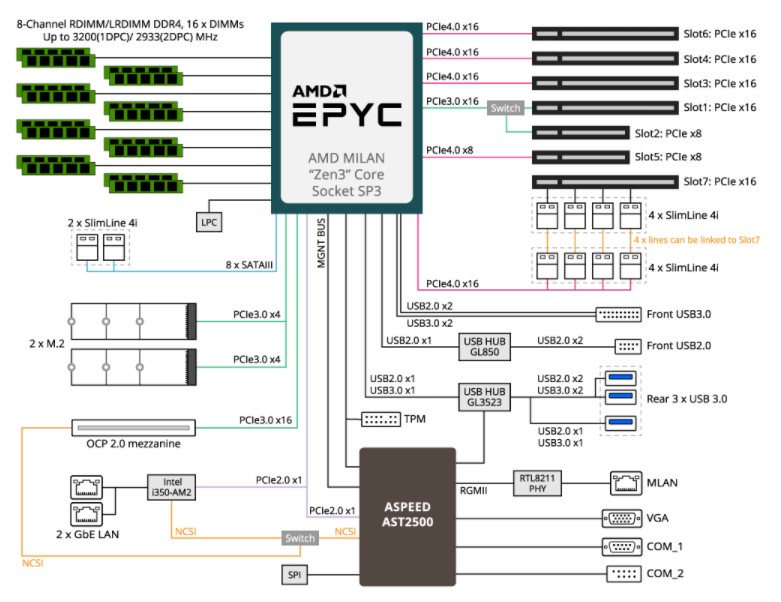
Depending on the type of system you are looking to build, this is going to be a diagram you will want to study. Remember, there are only 128 PCIe lanes (or high-speed IO lanes) on the EPYC platform in total, and that is why so much is shared. Gigabyte did a great job of exposing functionality on the board, but not every slot can be active and filled simultaneously with full bandwidth.
Gigabyte MZ32-AR0 Management
In terms of management, it seems like Gigabyte is using the MegaRAC SP-X platform that we see on many servers.
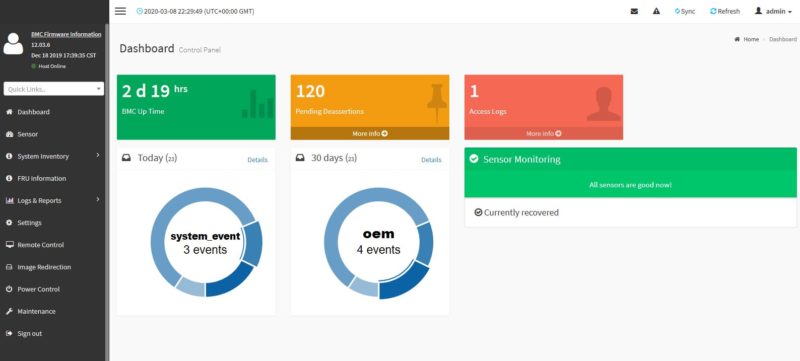
This is a fairly common management solution in the industry. Gigabyte has a little tour that you can check out if you have never used the solution and want to see what it offers.
One of the newer features is that Gigabyte is using a unique BMC password. We can see the password on the CPU cover.
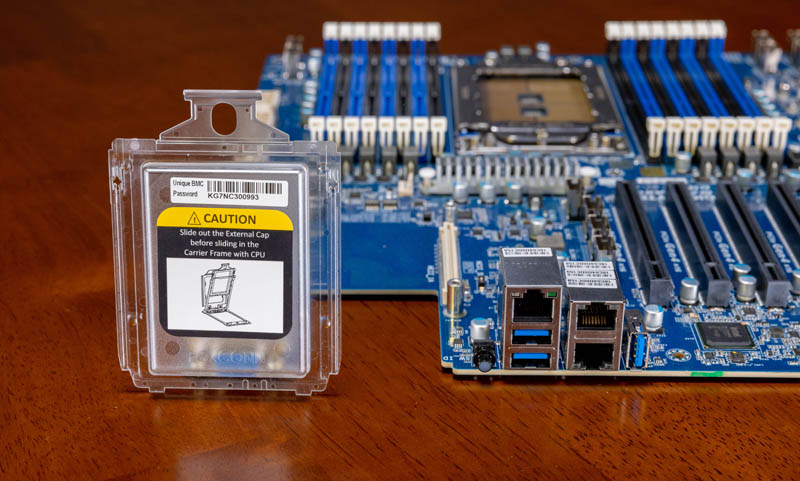
Unique passwords are being mandated by many jurisdictions, and so standard combinations like admin/admin, admin/password, and so forth no longer work. Gigabyte is complying with these new regulations similar to how we have seen many other companies adjust to them.
Overall, this is a very functional solution.
Systems with the Gigabyte MZ32-AR0
Just to give one a sense of what can be built using this platform, we have actually looked at this motherboard in a number of systems. These include the Gigabyte S452-Z30 4U 36-bay AMD EPYC server. That type of platform would previously have been a dual-socket server, but with the EPYC base, it is a single socket solution.
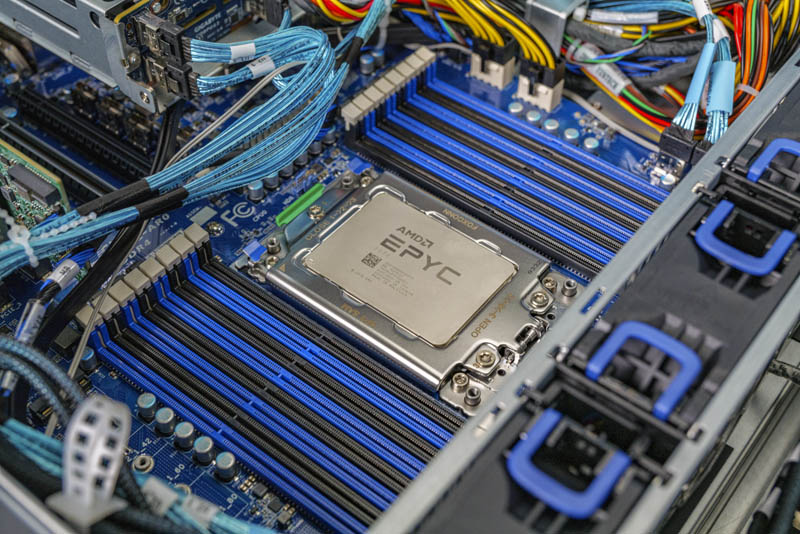
Another good example is the Gigabyte R272-Z32 2U 24x NVMe SSD server. An interesting note here is that one can see the OCP NIC 2.0 slot has a risers for additional U.2 NVMe storage.
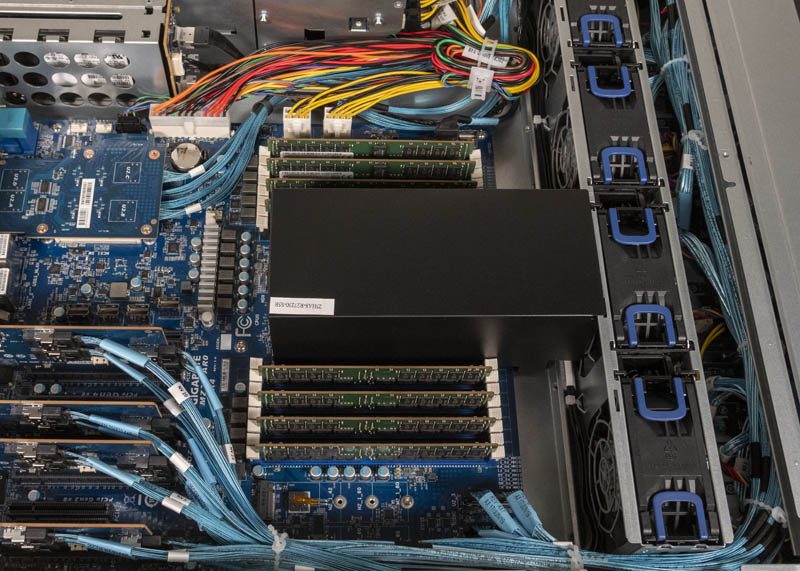
Overall, this platform focuses on expandability and flexibility, and that can be seen from systems like these with the motherboard.
Final Words
This is one of those very cool platforms. The Gigabyte MZ32-AR0 has just about everything one could want with a ton of flexibility. Perhaps the one “strange” feature is the OCP NIC 2.0 slot, but once one understands the cost savings reasoning, it makes a lot more sense.
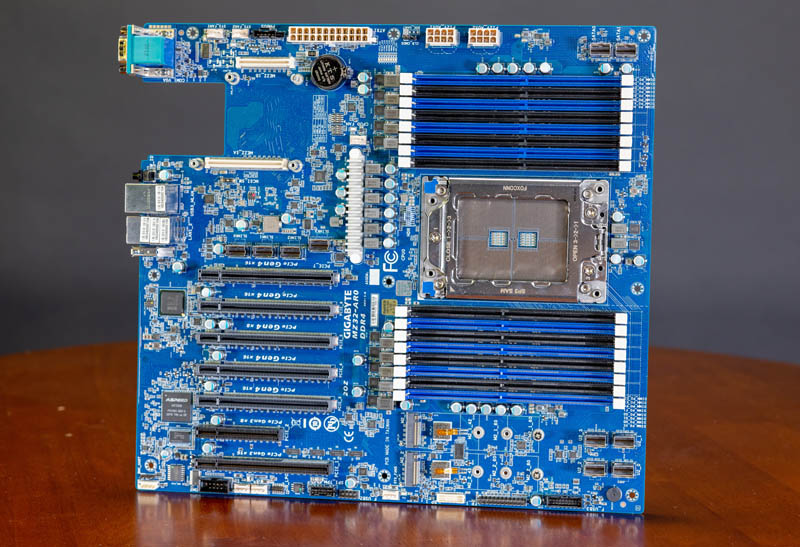
What Gigabyte made is a single socket AMD EPYC motherboard that leverages the platform’s capabilities to create something truly flexible.
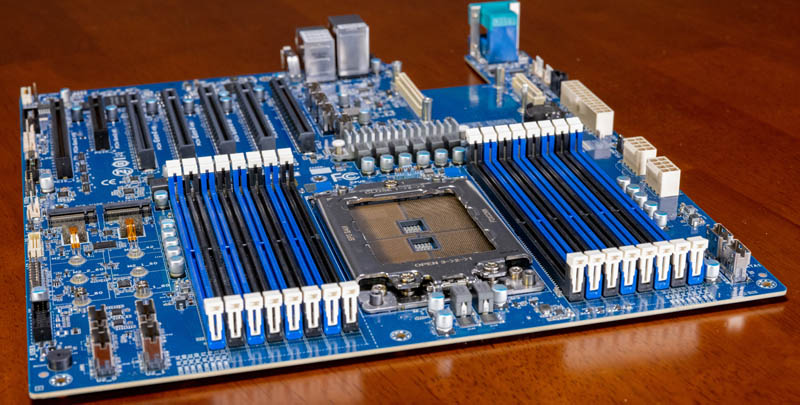
We get a number of STH readers asking about AMD EPYC motherboards, so we figured we would take a look at one we have used in a number of systems so we can also show how these are used and give our readers some ideas.




How can it have a value rating if there isn’t even mention of the price?
@Zamadatix The board(here sadly unavailable since a few months) costs around 586 Euro(2022-04), lowest price ~575 Eur(2020-09) *incl. 21% vat
One other thing to note is there is no way to put the two M.2 slots in a RAID0/1 through the MB. Depending on your OS, it makes these M.2 slots pointless.
it is a great board working 24/7 without problems in general.
the only think i cannot manage to solve is the slot7 operation.
in diagram shows that slot7 is linked with 4x slimline. but i haven’t found how this link is activated. if someone knows about it.
thanks
@Paul cosmos had the same problem, and found out, when setting the PCIe 7 to x4x4x4x4 slimline i4 are activated. Hope that helps!
I have another problem, I cannot control the fans. I don’t have the setting in the BIOS under SMU Common Options, the settings for fans is just missing. Updated to R28, still missing.
When using the BMC to set fan speed, no response, always 100%. Temps and so are fine, 30°C.
If anybody knows how to solve, thanks!
does it really have 4pcie4.0? THE pcie7 can’t use as a gpu slot. so when I want 4 gpus installed, how could I do?
@Jeremy Was thinking about the same thing and it looks like a custom water cooling loop is the only way to make the cards short enough.
@Lilliput did you checked user manual? Page 90. “Fan Control” set it to MANUAL.
Hello, everyone, I want to ask if slot7 on this motherboard can’t work properly. I insert a tesla T4, and the device can’t be found in the device manager. But if I insert slot6, it can display normally. I checked the BIOS, set auto and enable. Does anyone know how to recognize the gpu card,Thank you!
My VGA died so no video, and no remote video on bmc either
The only thing I don’t get is Slot7 and the 4i headers in the block diagram. There is no connection between the CPU and Slot7, only to 4x 4i headers and then the yellow lines to the other 4x 4i headers. Does that mean that the below ones are the ones on the bottom right corner of the board, and if I’d want to use Slot7, I’d need to use slimline cables from those 4x bottom right 4i headers to the 4x 4i headers above Slot7 to use these lanes in the slot?!
Or did somebody just forget to draw an x16 link between the CPU and Slot7? I’m a bit confused on that one as you might realize.
A reaction to the comment of Bill Carson. Well my VGA also died on this mainboard. I returned it and received a complete new board. After a while this VGA also died. At least most of the time. I use an external video adapter for video, but sometimes the on board VGA works. I think this is a major flaw in the mainboard.